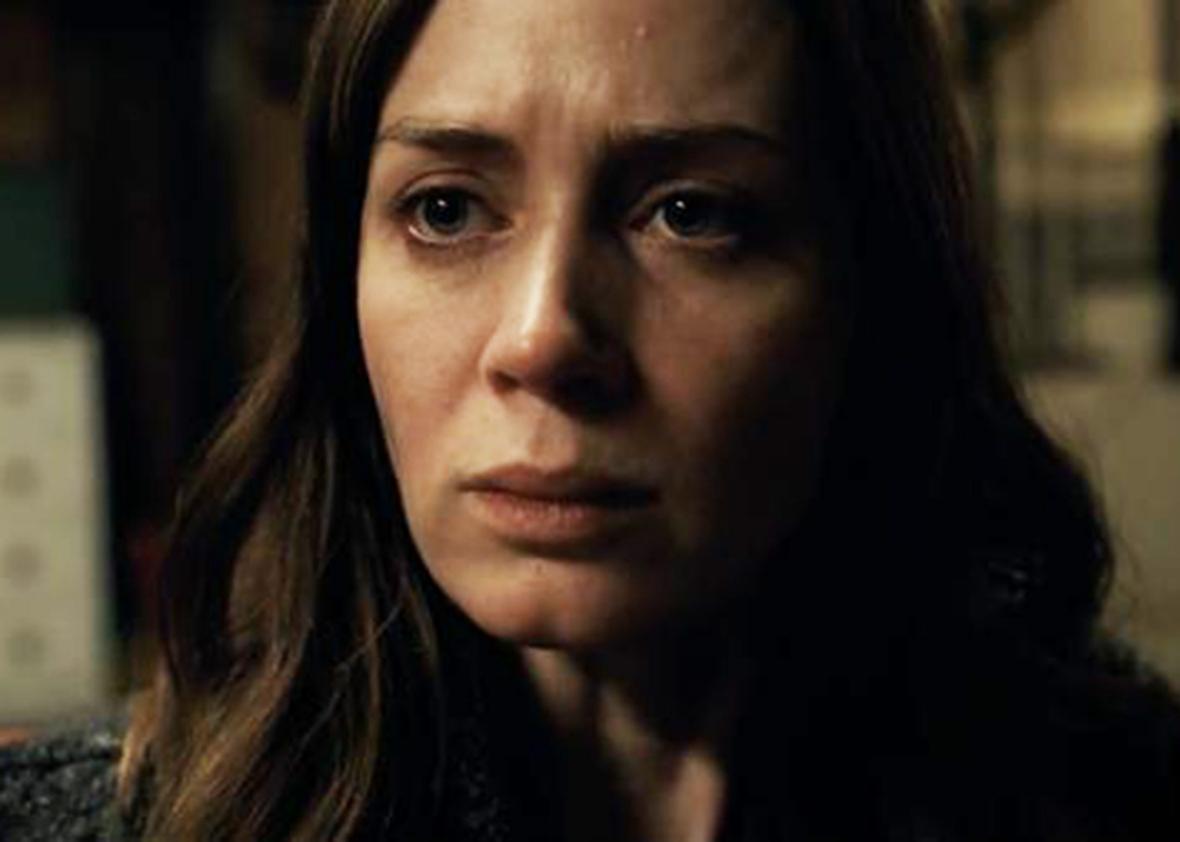The novel The Girl on the Train, which has sold more than 15 million copies worldwide, is a natural fit for the screen. It’s a suspenseful, sexy mystery revolving around the type of charismatically damaged women that movies like Gone Girl and The Girl With the Dragon Tattoo call “girls.” (“My husband says I’m the mistress of self-reinvention,” murmurs one character early on, flaunting her Pilates-toned stomach.) The book itself could be repetitive and squalid, its cast of unsympathetic characters mired frustratingly in their pasts. Tate Taylor’s film adaptation, meanwhile, actually does more profound philosophical work than the novel (or at least it does the same work more persuasively). The film, unsettled and unsettling, changes its mind constantly—and so do you, toggling between theories and suspects. Taylor cycles restlessly through genres, tones, and points of view. The result—a thriller that explores unsteadiness not just as a state of mind but as a creative value—argues that distortions can be resolved, rock bottom can be pushed off from, people can change.
Transposed by screenwriter Erin Cressida Wilson from England to New York, and with a minor character or two inserted—hi Lisa Kudrow!—Paula Hawkins’ story keeps its basic shape. Rachel (Emily Blunt, a marvel of bleary dishevelment and helpless contrition) is a jobless alcoholic mourning the dissolution of her marriage. Every morning, she aimlessly rides the Metro North into the city; the route takes her by her old neighborhood, where she can look into the backyard of the house where her ex-husband Tom (a smooth Justin Theroux) lives with the woman he left her for, Anna (Rebecca Ferguson). A few doors down are a seemingly perfect couple about whom Rachel fantasizes obsessively, Scott (Luke Evans) and Megan (Haley Bennett). Bennett has the most physical role of the three women: If Rachel is trapped in her head, Megan, at once breathily sensual and childlike, is initially all body, always jogging, stretching, or seducing.
One day Rachel, on her commute, observes Megan with another man. Then Megan disappears. Did she run off with her lover? Did Scott, a possessive and maybe violent guy, hurt her? Or is Rachel herself responsible? The film filters in scenes that could be flashbacks or hallucinations—apparently Blunt’s hot mess, coming unglued during her drunken binges, commits crimes she can’t remember.
As Rachel interposes herself in the police investigation, befriending Scott and antagonizing Tom, the movie adeptly guides viewers to all the wrong conclusions. One challenge of adapting a literary megahit is that some audiences already know whodunit; Taylor addresses this problem in part by committing so thoroughly to his red herrings (including an enigmatic, homophonic man with red hair) that I wondered whether his film was going to change the ending. But regardless of how familiar you are with Hawkins’ plot, there’s pleasure in seeing the jigsaw pieces come together. The film’s construction is evocative and fluid, the plotlines of the three women entwining in ways that amplify each one. Screenwriter Wilson captures the blurring quality of the original story: Megan, Rachel, and Anna are constellated around the same places, the same men, and they share desires and fears. A flashback that exposes a secret maternal side to Megan melts into a scene in which Rachel wrestles with infertility, and Anna tries to protect her child. This slip-sliding—which mother is which?—proves as disorienting and effective as a vodka shot or blow to the head (two brain-scramblers also featured prominently in The Girl on the Train).
The movie isn’t perfect. I’m not even sure if it’s good. For one thing, it can feel reductively boilerplate in its treatment of it-girl Megan. (She has sex in at least four locations and has to speak lines like “I heard when you get hit by a train, the impact is powerful enough to rip your clothes right off.”) Certain plot twists beggar belief, just as in the book. But the camera is fascinating—a kind of close third person narrator that occasionally develops a mind of its own. In the Wall Street Journal, cinematographer Charlotte Bruus Christensen explained how she created a drunken, staggering effect by using special lenses and letting the equipment sway from side to side. With “a technique called step printing, which duplicates frames to change the pace of movement on screen,” she was able to convey Rachel’s dizziness and confusion without falling back on drunk person clichés: empty bottles, long swigs, slurring speech. For the remembered good times, shots are bathed in a cleansing glow.
Taylor shows more willingness to experiment with genre than Hawkins did. His noir-ish suspense story occasionally veers into full-blown horror: In one scene, over a screeching soundtrack, Rachel lurches toward Megan with murder in her eyes. In another, she appears in silhouette, cradling a baby in the mist. Often during The Girl on the Train you get a visceral sense of wrongness, of things about to go (even further) south. That potential, in the book, just felt sordid. But in the movie, it has a flip side. What if, Taylor seems to ask, we are better people than we think? What if our instincts can be trusted? It could be the irrepressible appeal of actors like Blunt and Bennett. Or maybe the movie’s mercurial tone is just not suited to wallowing in depravity. While Hawkins’ novel took a deeply broken, messed-up set of characters and gave them ugly things to do, this film ends up zigging toward the light.
